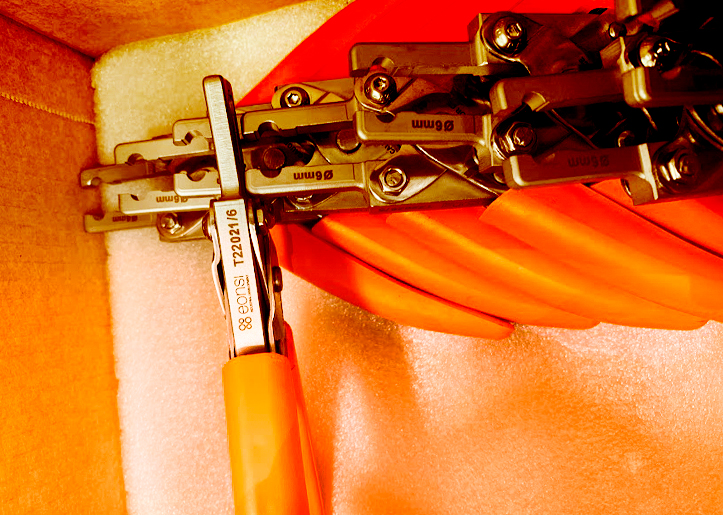Tempering is a heat treatment that is carried out on steel after hardening to achieve…

Sandblasting: what it is and what it is used for | EONSI
Sandblasting is an effective and economical surface cleaning technique that removes corrosion, residues and rust. Find out how it is done.
Sandblasting: what it is and what it is used for
Sandblasting is used in the industrial sector to clean parts in preparation for subsequent coating, with paint or any other substance, and is carried out by spraying surfaces with abrasive micro-particles launched at high speed.
What is sandblasting?
Sandblasting is a treatment that is used to restore the youthfulness of products that no longer have practically any use and consists of the projection of abrasive particles onto a part. This abrasive blasting produces a result similar to sanding, leaving the surface of the part with a non-reflective satin effect.
Also known as shot blasting or blasting, it is one of the safest and cleanest techniques for the recovery of industrial parts and the removal of rust. One of its most important characteristics is that it is a dry procedure that leaves no residue, guarantees very effective cleaning and handles residues very efficiently.
Although it is called sandblasting, it does not actually use sand, but rather microstructures or glass microspheres, one of the abrasives that works best for cleaning parts.
What is sandblasting used for?
Sandblasting is mainly used for cleaning surfaces, removing dirt or residues on the treated parts and for stripping paint or rust. In addition, sandblasting is also used in surface preparation work, prior to painting or coating, to remove impurities and to roughen the surface to a suitable degree for the work to be carried out, glass matting or stone engraving, for restoring metals and components, as a deburring method, to remove burrs using turbine blasting machines or overpressure blasting machines and for finishing metal surfaces.
How is sandblasting carried out?
Sandblasting is carried out with specialised equipment and requires a space created specifically for this purpose, as it is not advisable to carry it out in the open air due to the fact that when the machine is activated, certain particles are released into the air which are pollutants. The space we are talking about is called a sandblasting room and consists of hermetically sealed rooms that allow the parts to be worked on in compliance with all the regulations.
Moreover, sandblasting is done with a sandblaster, a machine that has a flexible and reinforced hose that ends with the application gun and that allows the sand output to be properly regulated. In addition, the equipment is complemented with special suits for the operators and masks.
The steps to carry out this technique are as follows:
- Removing the first layer of ceramic or glass with a laser, thus removing the paint and creating guides for sandblasting.
- Sandblasting which, thanks to its strength, is sufficient to create a deep engraving, allowing the use of different depths and widths in the groove.
- Filling with colour in the undercuts that were created and that favour the appearance of contrasts in the different pieces.
Chemical composition of sand blasting
The chemical composition of sandblasting is SiO2 (70-73%), Na2O (13-15%), k2O (0.2-0.6%), CaO (7-11%), Mg (3-5%), (0.5-2%). They have a hardness of 6 Mohs and a density of 2.5g/cm3. The colour is white and the grain size is between 100/200 microns.
Advantages of sand blasting
Sandblasting is a simple and straightforward process, highly versatile due to its wide variety of uses, safe as it is an environmentally friendly and non-toxic process, and provides excellent results as it can clean almost any surface.
In addition, sandblasting achieves high definition results and a unique level of detail allowing fine filigree and complex strokes, a relief effect, in fact the 3D effect it achieves is the best on the market providing a voluminous appearance and exclusivity.
Sandblasting applications
Sandblasting can be used in a large number of industries and processes such as, cleaning of stainless steel and weld pickling to remove calamine, cleaning of parts to homogenise surfaces, correction of defects, gentle cleaning of turbochargers, engines, moulds, etc., and matting and satin finishing of parts.
It is also used in various sectors such as the aeronautical industry, in refineries, steel, aluminium, paper and gear factories and in the food and medical industry.
EONSI’s aim is to offer a comprehensive service to our customers. We have the best finishes for machining parts such as sandblasting, ask us with no obligation and find out how we can help you with this process of cleaning parts.



